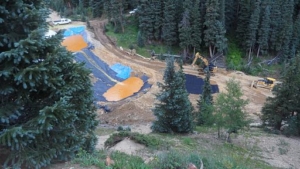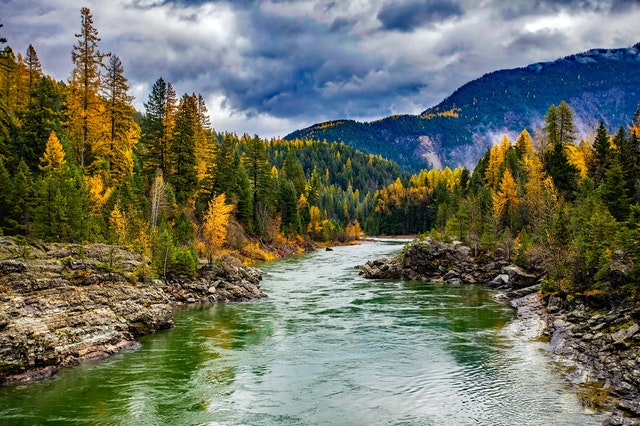
Retainings ponds constructed in response to the 2015 Gold King Mine Spill. By EPA [Public domain], via Wikimedia Commons
The spill affected home owners and businesses more than 100 miles downriver. Along with Colorado, residents in New Mexico and the Navajo Nation were forced to find other usable sources of water while officials worked to stop the leak and clean up the damage done to the river.
A year later, the cleanup continues. Water contaminated with mercury and arsenic is still leaking from the mine at a rate of 500 gallons every minute, according to the EPA. In an effort to combat the contamination, the EPA built a water treatment plant to clean the river’s water.
And while the river is back to pre-spill levels of contaminants, the effects of the spill are still being felt. For the Navajo Nation, the spill uprooted their way of life. The event came as fruits and vegetables were being harvested and other crops were just getting planted. When news of the spill arrived, Navajo officials turned off the two irrigation systems that farmers relied on for water. Crops were lost and sales of harvested items dropped due to worries of contamination.
The EPA took responsibility for the spill, saying a contractor working for the agency accidentally put a hole in the mine with a back hoe during cleanup. However, many have been upset with the speed at which the agency has provided aid or answers following the spill.
New Mexico recently filed a lawsuit against both the EPA and Colorado. The New Mexico Environment Department (NMED) took readings of the New Mexico portion of the river earlier this month and found lead levels of 900 parts per million, well above normal readings. New Mexico officials also said they have not received all of the money they requested to continue the cleanup as well as funds for long-term monitoring of the river.
“We are still trying to get the EPA to come on board and do what they need to do, to make sure the water is safe,” said Butch Tongate, NMED Deputy Secretary.
One positive development has come out of the spill: abandoned mines are now getting more of a spotlight. Hundreds of mines lay abandoned in the southwestern area of Colorado. Many of these abandoned mines are leaking toxins into nearby water sources. The EPA is working to figure out a way to deal with the mines, including the Gold King Mine, which is now on a list of proposed Superfund sites in the area.
Initially, the idea of a Superfund labeling was seen as a negative because it could bring down property values as well as damage the state’s booming tourism. However, the Gold King Mine spill showed how important and costly it can be to clean up abandoned mines. The Bonita Peak Mining District is the proposed Superfund site that includes nearly 50 mines. The designation will allow for more funding to clean up the mines and the surrounding waters.
Millions of gallons poured out of the Gold King Mine last year. A year later, everyone from farmers to politicians to taxpayers are feeling the effects.






Recent Comments